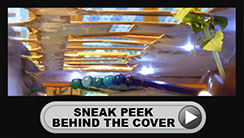
An enthusiastic, self-taught gardener, Tara Lissner is passionate about gardening and eager to share her zeal and knowledge with other gardening fans.
In 2012, she joined forces with Hester Macdonald, a British-trained landscape designer, to launch the Swiss Gardening School.
(Photo by Jean-Luc Pasquier)
Swiss Gardening School
www.swissgardeningschool.com









